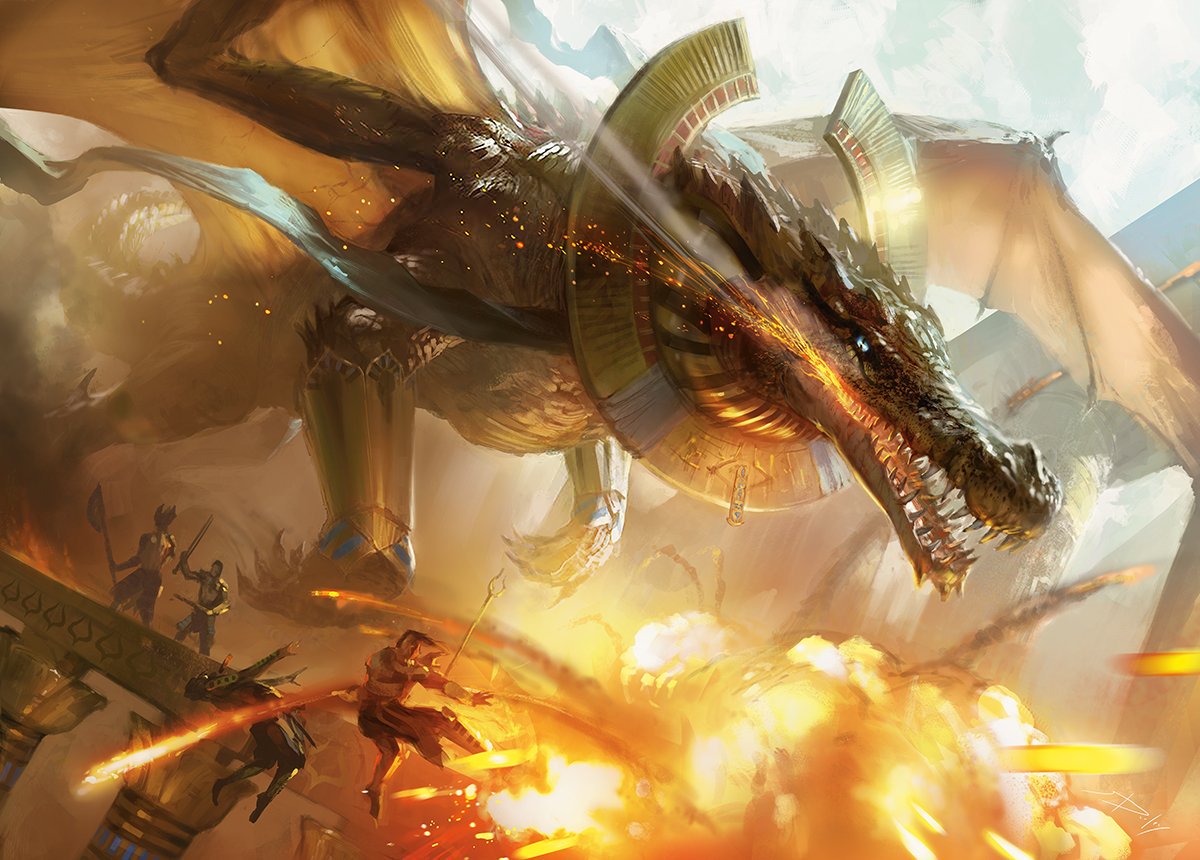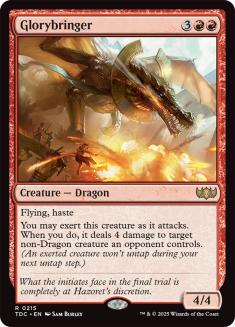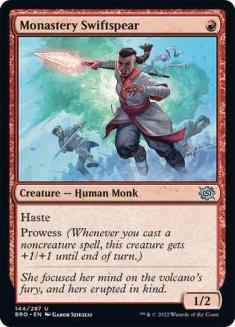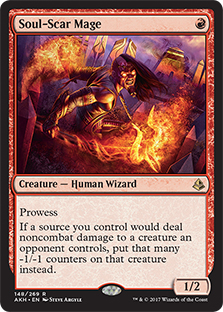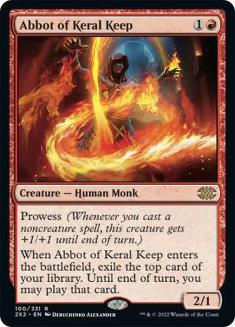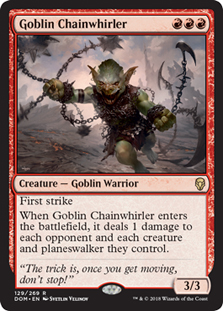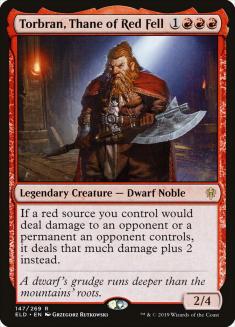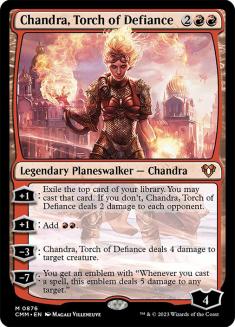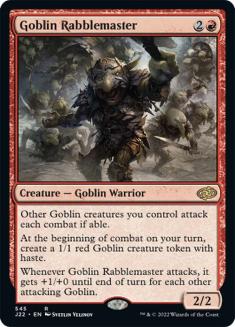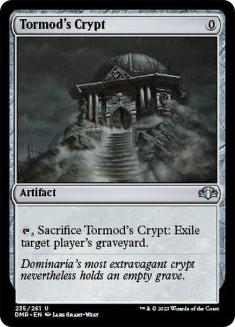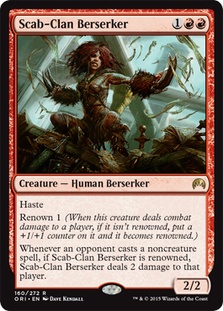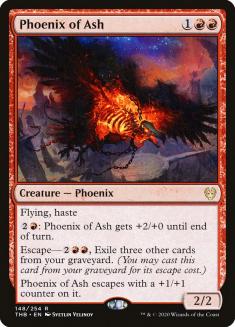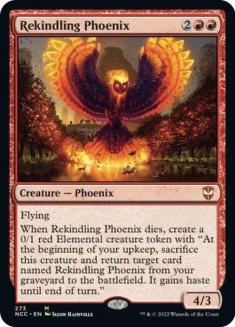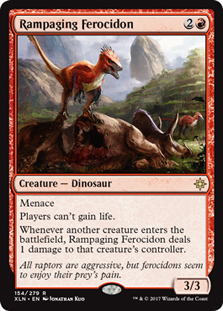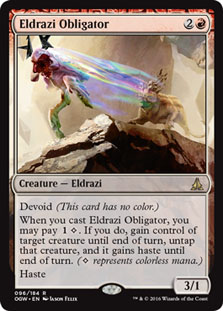Pioneer is on the forefront of everyone’s Magic mind. With the Players Tour happening in Phoenix in just over a week’s time featuring the Pioneer format, it’s all my community has been asking about! My Twitter is full of people who are qualified for the event asking what they should play. Some are curious if Chonky Red is the best deck. After all, it was rumored to be dead in the water after the rise of Five-Color Niv-Mizzet. And those rumors were mostly true.
But that just means we have to change! Every midrange deck is malleable. That’s the thing I love most about Chonky Red. If the situation calls for it, lowering or raising your curve is all it takes to give you an edge in a given format. We were a bit thicker than most red builds in order to play Glorybringer, a heavy hitter that punishes people for tapping out turn after turn. But now people are playing too much removal and not playing creatures vulnerable to Glorybringer, so we have to change.
This past weekend, someone else took the Chonky reins and made it their own, and in doing so just obliterated the competition in the Pioneer Showcase Challenge on Magic Online (MTGO). This tournament is a tough one, full of professional players and amateurs alike. There is a barrier to entry, meaning you had to do well in a previous tournament to earn your spot in this one. Suffice it to say that all the top decks from this tournament should be taken very seriously, and are likely to have a reasonable influence on the Players Tour.
Here’s the winning red list.
Creatures (27)
- 4 Monastery Swiftspear
- 4 Abbot of Keral Keep
- 3 Kari Zev, Skyship Raider
- 4 Soul-Scar Mage
- 4 Goblin Chainwhirler
- 4 Bonecrusher Giant
- 4 Torbran, Thane of Red Fell
Planeswalkers (1)
Lands (7)
Spells (25)
Sideboard

Not quite Chonky Red, and not quite the same as a low-to-the-ground aggressive deck. And playing the full four copies of Torbran, Thane of Red Fell without a multitude of token generators? Blasphemy! But there is a ton to unpack, so let’s discuss why this version was successful and where we could potentially take it from here.
These two threats apply some real pressure when coupled with a few burn spells. And since the format got a little too big for Chonky Red, going lower to the ground makes a lot of sense. If the removal spells in the format are starting to look more like Crackling Doom and less like Fatal Push, that’s when you should start playing cheaper threats!
While we aren’t putting these prowess creatures to the best use, as we aren’t playing more than a handful of burn spells, I think it’s important to note that they’re efficient and hit pretty hard once you combine them with just one or two instants. I’m under the impression that this was the biggest change to the archetype, giving you more starts that run your opponent over instead of just smashing them with your top-end.
In my first League with the deck, I thought I’d hate Abbot of Keral Keep. After all, you have to wait a while to get full value out of it. Then I realized that you don’t have to extract max value out of every single card. Abbot of Keral Keep is almost like a split card. In the control matchups, you should just cast it as a two-drop threat because that prowess body can hit pretty hard. But if ever drawn later in the game, Abbot of Keral Keep is actually pretty great. Hitting extra lands is important sometimes, but really the big draw is how multi-functional this card can be in a wide variety of matchups.
The two-for-one generation against aggro decks when finding removal is huge. And because we have so much removal, you can usually make the games against other midrange and aggro decks go a bit longer if you want to extract max value out of Abbot. Just don’t be afraid to cast it on the second turn if you don’t have much else going on!
A lot of people have come at me about Goblin Chainwhirler, and my response was always the same: not yet. Goblin Chainwhirler is obviously powerful and shines against a format full of one-toughness creatures. Playing stuff like Legion Warboss or even Hanweir Garrison was a conscious decision in order to maximize the number and strength of Mutavault in the archetype. The triple-red three-drop made playing more than one or two Mutavaults virtually impossible. And my experience with Chonky Red was largely just a showcase on how good Mutavault actually is.
But times change, and formats change, so you must change with them. This version uses Goblin Chainwhirler to clean up opposing blockers, but it really shines when you get to pair it with either Soul-Scar Mage or Torbran, Thane of Red Fell.
Four copies. What the hell? It’s legendary! But yeah, it is that powerful. I had to stop myself from sideboarding it out too often when I was testing the new build, just to see if there was something I was missing. I did pretty regularly draw a backup copy of Torbran once the first one died, but it was clunky as heck and having the second copy rotting in your hand in the wrong spots was a bit awkward. I do like going hard on stuff that you find powerful, but there’s a reason I haven’t played more than two or three of this thing in most of my red decks.
I always found Chandra, Torch of Defiance to be one of the better cards in the deck, so trimming this down to one copy felt unreasonable. In fact, I think I’d rather play more copies of Chandra than Torbran. It’s a flexible threat that allows you to interact with your opponents in a bunch of different, unique ways. Killing a creature and leaving around a card-drawing engine is extremely powerful. Threatening the ultimate is strong. Heck, just dealing your opponent two extra damage per turn is pretty good. And don’t underestimate the strength of making two mana!
Chandra has always felt like one of the best cards in the deck, so it seems a bit strange that alice1986 chose to only play one copy in the maindeck. Actively choosing to play four copies of Torbran and one Chandra is so off-the-wall that there must be something I’m missing.
Goblin Rabblemaster is a lot worse in a format where your opponents are all playing a ton of creatures. Since the format has become more about playing to the battlefield, Goblin Rabblemaster has gotten a lot worse. When there are too many creatures to block your tokens, the strength of Goblin Rabblemaster is lessened. That snowball effect is no longer applicable when you just don’t have enough removal to kill all the opponent’s blockers.
The true draw of Goblin Rabblemaster in the first place was that it paired well with Embercleave. But Embercleave is perhaps the tool of a bygone era: a sledgehammer when what we really need is a scalpel. Goblin Rabblemaster is also significantly better when your opponents stumble. As people are developing new decks, that process takes some time and growing pains. That metagame is specifically tailored to make Goblin Rabblemaster look much better because any stumble is immediately punished. And with allied-color manabases being so atrocious, having those lands enter the battlefield tapped was occasionally just too much to handle.
Sideboarding: From the Ground Up
The sideboard from alice1986 is pretty similar to what we’ve built and seen before. Tormod’s Crypt and Scab-Clan Berserker have become staples, and the auxiliary removal spells fluctuate based on the expected metagame. Chandra’s Defeat has started to see more play to help out in the mirror, and Fry has been a solid choice lately due to the increase in Azorius Control. Lava Coil is solid, but is it better than Abrade? Having no way to kill an artifact seems strange.
One thing I like to do is abandon certain cards once the target has rotated out of favor. For example, right now, Tormod’s Crypt (or any graveyard card) isn’t too good at the moment. No one is really playing that Sultai Dredge deck, and Tormod’s Crypt isn’t that great against Underworld Breach, so why not cut it? We could certainly use more threats against control or Niv-Mizzet Reborn. We could also use a few more slots for Mono-Black Aggro or even the mirror.
The biggest thing to understand when building your sideboard, for any deck, is to fill the gaps that your maindeck leaves behind. For decks like Chonky Red, I opted for the hard sideboard approach: finding X cards to bring out for Y cards in virtually all the top matchups. It was more science than art. A heavy hand. Four copies of Tormod’s Crypt, for example, was a concession to one matchup that was relatively popular at the time of construction and not the best matchup. Now I’d like to look at shoring up another matchup entirely.
The Final Form
While Chonky Red might go through some changes, slimming down or swapping directions entirely, it’ll always be Chonky Red deep in my heart. But after adding in another one-drop, another two-drop, and removing the thicc boi that is Glorybringer, I can’t really call this deck Chonky anymore. It’s lost some of that thickness. It’s leaner, and now features zero calories. It’s Diet Chonk. And I can’t suffer it. I must get bigger.
Creatures (23)
- 3 Kari Zev, Skyship Raider
- 4 Glorybringer
- 4 Soul-Scar Mage
- 4 Rampaging Ferocidon
- 4 Bonecrusher Giant
- 4 Phoenix of Ash
Planeswalkers (3)
Lands (10)
Spells (24)
Sideboard

This iteration is putting a lot of emphasis on the new Phoenix of Ash. It’s been seeing a lot of play in more aggressive builds, but I think it fits perfectly into a version that can go late and really put that mana sink to good use. Phoenix of Ash is perfect for a deck like Chonky Red because it provides an aggressive slant that still has a lot of play as the game goes late.
One of the best parts of Chonky Red is having enough lands to cast and use all your spells without actually getting flooded. This is in part due to Ramunap Ruins and Mutavault, but also has some merit when you get into the spells. Stuff like Bonecrusher Giant is exceptional in this archetype because it helps fill out your curve early and acts a lot like two spells. Phoenix of Ash is both an aggressive creature and a late-game creature, applying pressure to planeswalkers when you need to but also surviving late into the game when your opponent has a bunch of removal spells.
It’s also cheaper than Rekindling Phoenix and is much better at pressuring an opposing planeswalker.
Speaking of Rekindling Phoenix, this one is a great sideboard option against fair and midrange strategies alike. If you find yourself losing to a ton of removal or sweeper effects from the opponent, Rekindling Phoenix can be a nice two-for-one that has your opponent sweating when it starts to attack. It is pretty mediocre against bounce or exile effects, yet will be a tough nut to crack for a lot of the format’s top contenders. The only reason it isn’t in the maindeck is because it’s a bit mopey against Teferi, Time Raveler.
I expect this one to come back in a big way. Rampaging Ferocidon is a great way to punish and shut down the Heliod, Sun-Crowned + Walking Ballista combo that keeps popping up all over the place. It’s tough to block, tough to kill with cheap removal, and deals a lot more damage than it really lets on. In the mirror or against an opposing aggro deck, that life loss can be detrimental, but more often than not it’s going to be a house against whatever your opponent throws at you.
I’ve long stated that having three toughness and three mana is a sweet spot in Pioneer, because it mostly dodges Fatal Push, Wild Slash, and Stomp. Looking at different threat packages and combinations will be the key to making this, or any red deck, successful in the current metagame.
A hot addition to the archetype from the sideboard, Eldrazi Obligator is one way to get a leg up on some of those ramp decks that might be giving you trouble. There are worse answers like Burning Earth that I’ve seen cropping up, but I like the idea of just stealing a large Hydroid Krasis and crashing in for tons of damage. And, like most of your spells, it functions a lot like any other aggressive creature in a pinch.
Versatility in performance is key to this deck functioning properly.
My main point in showcasing both of these versions of red is that I want you to understand why they might do well or what led to their great performance in the previous week’s tournament. The more aggressive slant makes sense in some matchups, but losing Glorybringer and Mutavault is just too much for me to handle. I’ve tried to like Goblin Chainwhirler. I really have. But I just can’t suffer another flood that can’t let me start attacking for two damage!
Playing bigger stuff requires more lands, and playing more lands means you flood more often. Mitigating that flood from playing lands or spells that can utilize more mana is the key to making decks like this successful. I’m going to spend the next few days trying to keep Chonky Red in business, trying out all sorts of builds utilizing some of the new cards from Theros Beyond Death, including but not limited to Phoenix of Ash.

